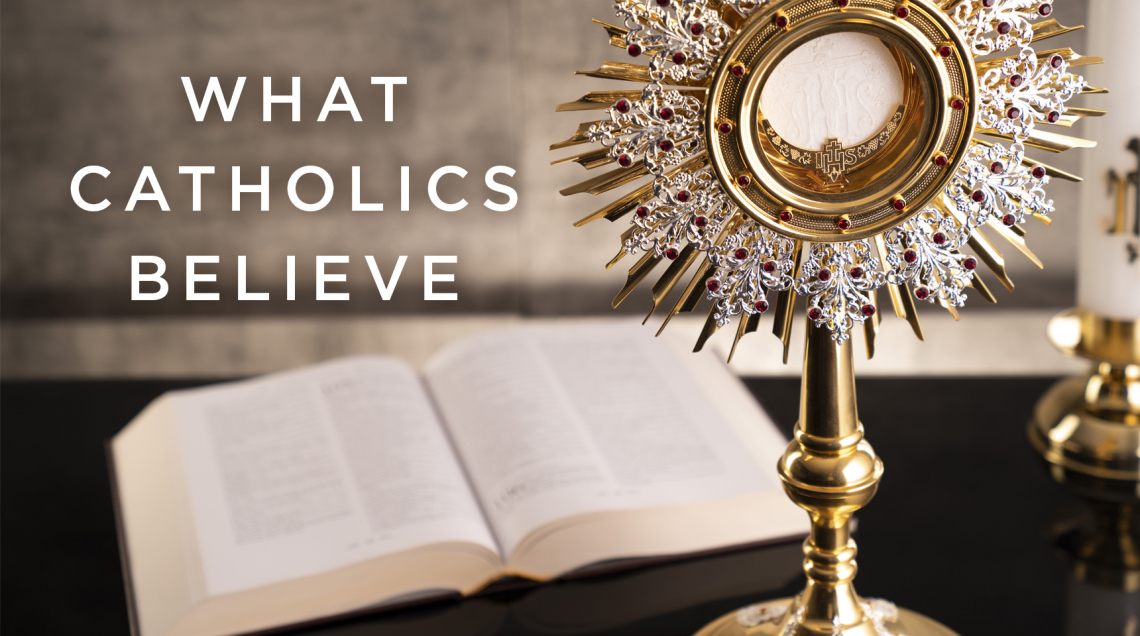The Mass: Where are we going for Mass?

As soon as Christianity was legalized in the Roman Empire in the early fourth century, Christians began building churches. Big churches. Beautiful churches. After having spent nearly 300 years offering Mass in other locations, why did the early Christians then begin to construct specially designed buildings meant for no other purpose than for Christian worship? Christians had lived without churches for three centuries. Why did they need them?
Of course, we were in much the same situation during the COVID-19 pandemic. Local health restrictions forced us to find other venues for the celebration of Mass. In some cases, parishes resorted to places like drive-in theaters, parking lots, and sports fields. Thankfully, the gradual easing of the pandemic has allowed us to return to holding Mass in churches, where we are protected from the cold and the rain. But do we have churches merely for these practical reasons? Or is there something deeper that causes Christians to build sacred places?
We Catholics build churches for symbolic reasons as much as we do for practical reasons. We want to say something by building a church. What we are saying is this: There is a difference between sacred space and secular space. Sacred space is set apart exclusively and uniquely for God’s purposes, not our own. God came to dwell with the human race by sending His son, Jesus, born of Mary. And so, we need symbolic reminders of God dwelling among us. And we need a location where God continues to be present and active in our midst. When we build a church, we take a location, a building, and set it apart for God’s purposes. It becomes a holy place because it now belongs to God who is holiness itself. It no longer is merely secular space, space which we use as we wish for our own purposes.
Most churches have many secular spaces associated with them: a hall, kitchen, classrooms, perhaps offices. These are different from the church proper. These spaces retain their secular character, even if they are attached to a church. What goes on there, as much as it is part of our Christian mission, is different from what goes on in the church proper. We are the actors or the agents of what goes on in these auxiliary spaces. God Himself is the actor in what goes on in the church proper.
Even within the church itself, all is not the same. The largest part of the church is the nave where the faithful sit, stand, kneel, pray, and respond. A smaller part of the church is the sanctuary where the priest and deacon and the ministers fulfill their roles. This part of the church shares even more fully in God’s holiness because it is from this part of the church that God speaks to us when the Scriptures are read, Christ becomes bodily present to us in the celebration of the Eucharist, and God’s blessings come forth to us through the ministry of the priest. The sanctuary itself is set apart once again from the larger church interior and reserved for the very actions that manifest to us God’s presence and action in our midst.
Within the sanctuary itself, one place is the holiest of all — the altar. At the altar, Christ Himself, body and blood, soul and divinity, becomes present to us under the appearances of bread and wine. During the time of the covenant made with Israel, God’s presence in the Temple in Jerusalem was always veiled by a cloud that hid His appearance from sight. In the new covenant, Christ’s bodily presence is veiled by the appearances of bread and wine. But His presence is no less real because it cannot be seen with the eyes. His presence on the altar is recognized by the sight that faith brings.
Finally, in our churches, we find a tabernacle where we reserve what remains of the Eucharist after our Communion during Mass has ended. We reserve the Eucharist so that those who could not be present, the sick and the imprisoned in particular, can share in the reception of holy Communion, even if they cannot share with us in offering the sacrifice of the Mass. The tabernacle is only holy because of what it contains, the body of the risen Lord Jesus. When the tabernacle is empty, it has no special significance because it serves no purpose at that point. When the tabernacle contains the Eucharist, however, it is the dwelling place of the One whom all the earth cannot contain, who promised to be with us until the end of time, the One who is holiness itself.
Sacred actions demand a sacred place. That was the intuition that led the early Christians to build the first churches. And it is the same conviction that causes Christian communities today throughout the world to raise up buildings that proclaim our belief in God dwelling and acting among us.
Msgr. Marc B. Caron, STD, is the moderator of the curia and vicar general for the Diocese of Portland.










